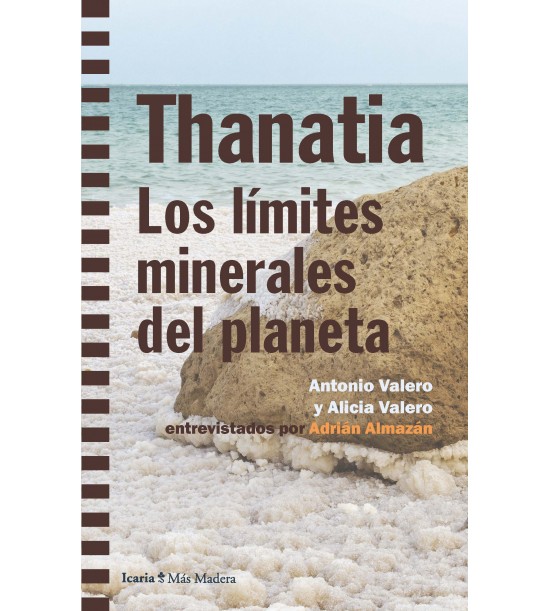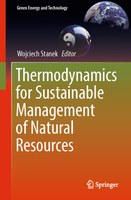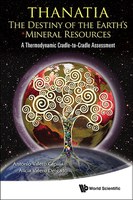Reference Environment
Szargut's Reference Environment
For the calculation of the chemical exergy of any substance, a reference environment should be defined.
The Reference Environment can be assimilated to a thermodynamically dead planet where all materials have reacted, dispersed and mixed. The most common R.E. used for calculating chemical exergies is that of Szargut.
According to Szargut, the chemical exergy of any substance is defined as the maximum work which can be obtained when the considered substance is brought in a reversible way to the state of the reference substances present in the reference environment.
Three kinds of reference substances can be accepted:
- gaseous components of the atmospheric air
- solid components of the external layer of the Earth's crust
- ionic or molecular components of seawater
Szargut assumes the reference substances most common in the environment. Some authors select the most stable reference substances (Ahrendts 1980, Diederichsen 1991. However, sometimes the most stable substances are very rare in the natural environment, because their formation is kinetically blocked (for example, some nitrates).
Standard chemical exergy results from a conventional assumption of a standard ambient temperature and pressure and standard concentration of reference substances in the natural environment. The values of standard chemical exergy of chemical elements and compounds can be gathered in tables (see Table 1 below).
The standard chemical exergy of any chemical compound can be calculated by means of of the exergy balance of a reversible formion reaction, as in Eq. 1 :
Where:
- DGf formation Gibbs energy
- ne amount of kmol of the element e
- bchne standard chemical exergy of the element.
Download the complete methodology here.
| Table 1: Chemical exergy of the Elements. Source: Szargut et al. 2005 | ||
| Name | Element | bch (kJ/mol) |
| Silver | Ag | 69,85 |
| Aluminium | Al | 796,10 |
| Argon | Ar | 11,69 |
| Arsenic | As | 493,83 |
| Gold | Au | 59,88 |
| Boron | B | 628,60 |
| Barium | Ba | 776,76 |
| Beryllium | Be | 604,53 |
| Bismuth | Bi | 274,92 |
| Bromine | Br2 | 100,89 |
| Carbon | C | 410,25 |
| Calcium | Ca | 731,40 |
| Cadmium | Cd | 293,38 |
| Cerium | Ce | 1054,40 |
| Chlorine | Cl2 | 124,02 |
| Cobalt | Co | 308,82 |
| Chromium | Cr | 584,49 |
| Cesium | Cs | 404,58 |
| Copper | Cu | 134,25 |
| Dysprosium | Dy | 975,35 |
| Erbium | Er | 973,15 |
| Europium | Eu | 1004,40 |
| Fluorine | F2 | 481,54 |
| Iron | Fe | 376,99 |
| Gallium | Ga | 514,75 |
| Gadolinium | Gd | 970,22 |
| Germanium | Ge | 556,35 |
| Hydrogen | H2 | 236,10 |
| Helium | He | 30,37 |
| Hafnium | Hf | 1061,28 |
| Mercury | Hg | 115,00 |
| Holmium | Ho | 979,54 |
| Iodine | I2 | 174,74 |
| Indium | In | 437,60 |
| Iridium | Ir | 256,56 |
| Potash | K | 366,66 |
| Kripton | Kr | 34,36 |
| Lanthanum | La | 994,53 |
| Lithium | Li | 393,03 |
| Lutetium | Lu | 946,76 |
| Magnesium | Mg | 629,37 |
| Manganese | Mn | 496,42 |
| Molybdenium | Mo | 730,27 |
| Nitrogen | N2 | 0,72 |
| Sodium | Na | 336,71 |
| Niobium | Nb | 900,29 |
| Neodymium | Nd | 970,08 |
| Neon | Ne | 27,16 |
| Nickel | Ni | 232,71 |
| Oxygen | O2 | 3,97 |
| Osmium | Os | 369,78 |
| Phosphorous | P | 861,42 |
| Lead | Pb | 232,41 |
| Palladium | Pd | 146,00 |
| Praseodymium | Pr | 964,04 |
| Platinum | Pt | 140,97 |
| Plutonium | Pu | 1099,87 |
| Radium | Ra | 826,27 |
| Rubidium | Rb | 388,89 |
| Rhenium | Re | 560,56 |
| Rhodium | Rh | 179,62 |
| Rutenium | Ru | 318,45 |
| Sulfur | S | 607,05 |
| Antimonium | Sb | 438,02 |
| Scandium | Sc | 923,89 |
| Selenium | Se | 346,47 |
| Silicon | Si | 854,10 |
| Samarium | Sm | 994,23 |
| Tin | Sn | 558,67 |
| Strontium | Sr | 773,59 |
| Tantalum | Ta | 974,81 |
| Terbium | Tb | 999,40 |
| Tellurium | Te | 329,10 |
| Thorium | Th | 1220,67 |
| Titanium | Ti | 906,65 |
| Thalium | Tl | 194,16 |
| Thulium | Tm | 952,50 |
| Uranium | U | 1196,22 |
| Vanadium | V | 721,45 |
| Wolfram | W | 827,46 |
| Xenon | Xe | 40,33 |
| Ytrium | Y | 966,39 |
| Yterbium | Yb | 944,85 |
| Zinc | Zn | 339,25 |
| Zirconium | Zr | 1080,88 |
- Szargut 2005
- Valero D, Valero and Martínez 2005
- Rivero and Garfias 2006
- Van Gool 1998
- Diederichsen 1991
- Szargut 1989
- Morris and Szargut 1987
- Szargut and Morris 1985
- Kameyama et al. 1982
- Sussman 1979. Choosing a Reference Environment-State for Available-Energy Computations. In: 72nd Annual AIChE Meeting, San Francisco, California, 11/79.
- Ahrendts 1977.The exergy of chemically reacting systems. VDI Forschungsheft 579, Düsseldorf (in German).
- Bosnjankovic 1963.Reference Level of Exergy of Chemically Reacting Systems. Forschung im Ingenieurwesen 21:151-152.
-
Szargut 1957. Energy potential balance in chemical processes. Archiwum Budowy Maszyn 4(11):89-117 (in Polish).












